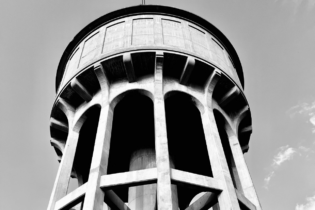Water&Sanitation Africa takes a look at the technology used to provide a solution for a new development in the KwaZulu-Natal Midlands, where no waterborne sewerage system was available.
Gowrie Farm is a residential and golf estate in Nottingham Road, in the KwaZulu-Natal (KZN) Midlands. The original farm property did not have a waterborne sewerage system for the new development; therefore installation of a septic tank soakaway was necessary. Geotechnical Consultants, Drennan, Maud & Partners were appointed to carry out a feasibility study of the on-site wastewater disposal and make suitable recommendations. The proposal suggested that a percolation test be carried out for each of the three houses on the property. Typically, a four-bedroom house on the estate produced 1100 ℓof effluent and needed an effective evaporation area of 470 m2. The outflow from the septic tank was to be discharged into a conventional soakaway system with a minimum length of 31 m. On-site conditions, including a clay content in the soil, restricted the depth of excavation for installation of the drains where deeper excavations may have resulted in the drains being placed on less permeable or bedrock material. Kaytech provided an alternative solution to the traditional stone filled drains using the Infiltrator Chamber System. The system provided a maximum exposed infiltrative area, and since they only required an excavated depth of 700 mm to be installed, they made for the most viable option. The system is a pre-manufactured open underground unit that acts as a direct replacement for conventional stormwater and wastewater attenuation, promoting effluent infiltration into the soil efficiency. The lightweight units and end-caps were supplied separately to maximise transport, handling and storage of the units. The Infiltrator Chamber System is a direct replacement for old, conventional stone and pipe French drain soakaways and may require as little as half the space, offering designers, installers and home owners greater flexibility, while minimising disruption of the landscape and saving money. The quick installation minimised heavy construction traffic that could damage and compact sensitive soils.Quick and easy to install, Kaytech’s Infiltrator Chambers have the advantage of being 100% environmentally friendly as they are produced from recycled plastic waste material. They are also chemical-resistant and UV stable, with a powerful arch design which supports axle loads of 70kN, with 300mm of compacted cover, equivalent to an AASHTO H-10 load rating.
A total of 200 Infiltrator Chambers were manually installed to accommodate the effluent from the three properties on the estate. Benefits Compared to a conventional stone and pipe French drain system, this method halved the installation time and resulted in a 29% cost-saving of approximately R 4 300. On returning to the site after nine months, the soakaway system is working effectively. Fact box: Benefits of Infiltrator Chambers compared with stone and pipe systems are:- small footprint with equal or better performance allowing less site disruption
- larger effective infiltrative area per linear metre allows installation on limited area sites
- fast, easy installation saves time and money
- equivalent or greater storage capacity means increased safety factor and peace of mind
- higher Long-Term Acceptance Rate (LTAR) guarantees a reliable, top-performing system
- patented sidewalls provide maximum infiltration
- entire bottom of chamber is open for unobstructed infiltration into soil.







